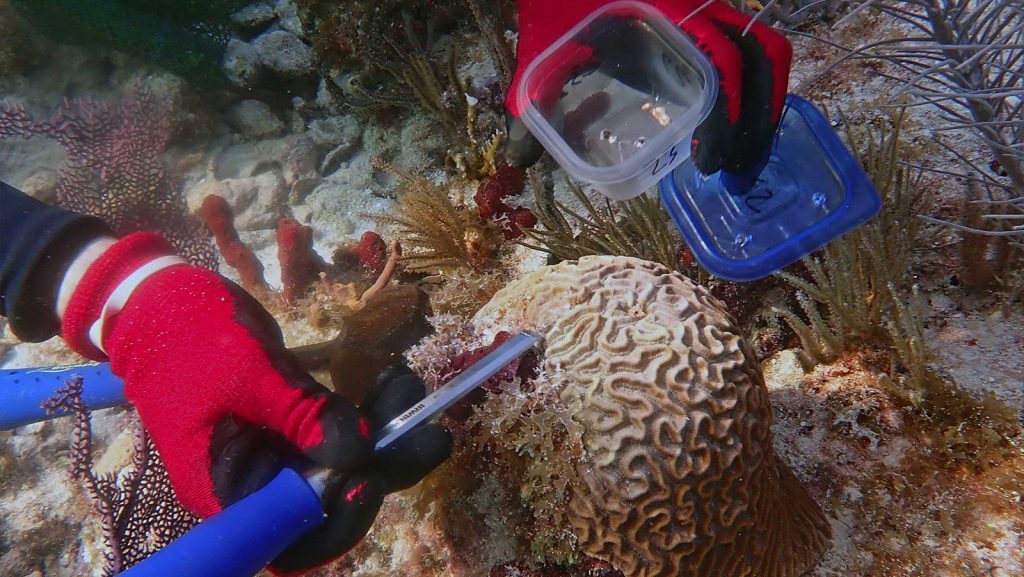When we look at the state of corals globally, it can be difficult to see a silver lining, but a recent paper published in Frontiers in Marine Science shows hope for corals in unlikely places. In the study, scientists at NOAA’s Atlantic Oceanographic and Meteorological Laboratory (AOML) and the Cooperative Institute for Marine and Atmospheric Studies (CIMAS) at the University of Miami Rosenstiel School of Marine and Atmospheric Science compared the molecular processes of brain corals (Pseudodiploria strigosa) living in urban waters at the Port of Miami with offshore corals at Emerald Reef. They found the urban corals had adapted to challenging conditions that helped them differentiate and consume healthy food particles over diseased organisms. Specialized proteins were also activated in Port of Miami corals, defending them against toxic substances and water pollutants. They even hosted symbionts (tiny algae that help corals survive) that were better adapted to live in shallow, turbid, high-nutrient waters.

Anthropogenic (man-made) stressors have contributed to coral mortality worldwide. This is especially noticeable along the Florida Reef Tract, which has suffered from bleaching events and the spread of disease. The Port of Miami, with its dense boat traffic, river-stormwater runoff, eutrophication, and dredging activities, presents an “anthropogenic obstacle course” of environmental stressors for marine life. Surprisingly, researchers found a high abundance of healthy brain corals at the port compared to their Florida Reef Tract counterparts.
“To me, the strange irony is that I spent years surveying some of the the most remote, aesthetically pleasing, and perceivably most pristine reefs on the planet, only to find that those corals, which had never before encountered significant environmental perturbation, are now more prone to climate change stressors. In the Port of Miami, we seem to have the opposite scenario: corals flourishing in an environment that, at first glance, would not appear to be amenable to coral survival,” said Anderson Mayfield, a coral scientist at AOML and CIMAS.
Contrary to surrounding areas, brain corals in the Port of Miami basin have made use of urban conditions, growing on man-made structures such as concrete walls and “riprap” (artificial boulders). These corals appear to be healthy, with no signs of disease or bleaching since 2017. So what is it about these corals that have allowed them to persist in the harsh conditions found in urban waters?


The comparison study showed that genetic receptors, digestive enzymes, and defensive immunity proteins enabled brain corals to select healthy food particles and protected them against disease. In short, the “molecular mechanisms” in urban brain corals have been the key to their survival and persistence in stressful conditions at the Port of Miami.
These findings are important for establishing an understanding of the molecular markers of coral resilience and how corals acclimate to less-than-ideal conditions. With upgrades to existing infrastructure and new coastal development, Port of Miami corals may need to be moved and better decisions made about the type of suitable habitat for their relocation.
Beyond urban waters, this research enhances coral monitoring, conservation, and restoration activities worldwide by providing hope for coral survival and ecosystem resilience in the face of climate change and other environmental challenges.
Reference:
Rubin, E.T., I.C. Enochs, C. Foord, A.B. Mayfield, G. Kolodziej, I. Basden, and D.P. Manzello, 2021: Molecular mechanisms of coral persistence within highly urbanized locations in the Port of Miami, Florida. Frontiers in Marine Science, 8:695236, https://doi.org/10.3389/fmars.2021.695236
